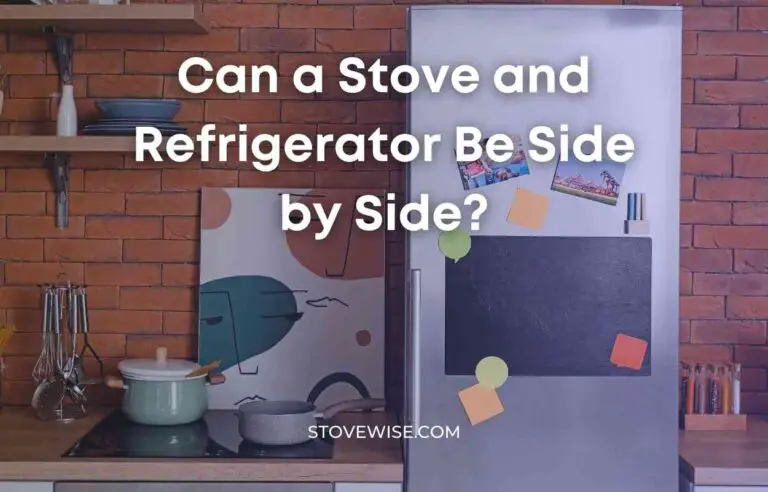Can You Use a Propane Stove Indoors? A Detailed Guide
Introduction: Propane stoves are a popular choice for outdoor enthusiasts who love to cook on the go. However, have you ever wondered, “Can you use a propane stove indoors?”
You can use a propane stove indoors for cooking and boiling water, but it can be risky if not done properly. To stay safe, follow these steps:
- Ensure good ventilation by using a range hood or opening a window.
- Regularly check for leaks or damage.
- Have a professional inspect the appliance yearly.
Read on to learn about the potential risks and how to mitigate them when using a propane stove indoors.

Contents
- What is a Propane Stove?
- Can You Use a Propane Stove Indoors?
- The Risks of Using a Propane Stove Indoors
- Safety Precautions for Indoor Propane Stove Use
- Alternatives to Using Propane Stoves Indoors
- Conclusion
- FAQs: Using Propane Stoves Indoors
- What Are the Primary Dangers of Using a Propane Stove Indoors?
- Are There Any Propane Stoves Designed for Indoor Use?
- How Can I Minimize the Risk When Using a Propane Stove Indoors?
- What Are Some Safer Alternatives to Propane Stoves for Indoor Cooking?
- How Should I Store Propane Canisters When Not in Use?
What is a Propane Stove?
A propane stove is a type of cooking appliance that uses propane gas as its fuel source. Propane is a versatile, efficient, and clean-burning fuel that is stored in portable cylinders or larger tanks.
These stoves typically consist of one or more burners on which pots and pans can be placed for cooking, and they are ignited using a built-in lighter or an external ignition source.
Propane stoves are commonly used for outdoor activities like camping, tailgating, and picnics, but they can also be used indoors with proper ventilation and safety precautions.
Can You Use a Propane Stove Indoors?
Absolutely! You can use a propane stove indoors to cook your favorite meals or boil water. However, it’s crucial to approach this with caution and take necessary safety measures to avoid any potential hazards.
First and foremost, safety should always be the top priority. Propane stoves, when used improperly indoors, can lead to gas buildup, which poses risks to your health and safety.
Propane is an odorless and colorless gas, making it difficult to detect any leaks or malfunctions without proper precautions in place.
To mitigate these risks, adequate ventilation is vital. When using a propane stove indoors, it’s crucial to ensure there is sufficient airflow to dissipate any potentially harmful gases.
For instance, you can install an overhead range hood that vents outside or open windows and doors to allow fresh air circulation. This helps prevent the accumulation of propane fumes in your living space, keeping you and your loved ones safe.
The Risks of Using a Propane Stove Indoors
1. Carbon Monoxide Poisoning
The primary concern when using a propane stove indoors is the risk of carbon monoxide (CO) poisoning. CO is a colorless, odorless, and tasteless gas produced as a byproduct of incomplete combustion. When inhaled in large quantities, CO can cause dizziness, headaches, nausea, and even death.
2. Fire Hazards
Propane stoves, like any open flame, pose a fire risk. When used indoors, there’s an increased chance of accidental fires due to flammable materials and confined spaces.
3. Explosions and Gas Leaks
Improperly handled propane canisters or damaged equipment may lead to gas leaks, which can cause explosions or fires.
Ensure you always inspect your propane stove and fuel canisters for signs of damage before use. Also, make sure to check our detailed guide on using LGP in butane stoves.
Safety Precautions for Indoor Propane Stove Use
- Ventilation: If you must use a propane stove indoors, ensure proper ventilation to minimize the risk of CO poisoning. Open windows and doors to allow fresh air to circulate in the room.
- CO Detectors: Install carbon monoxide detectors in your home to alert you if CO levels become dangerously high. Regularly test and maintain the detectors to ensure they’re functioning correctly.
- Fire Safety: Keep a fire extinguisher nearby when using a propane stove indoors. Familiarize yourself with how to use the extinguisher, and ensure it’s in good working condition.
- Proper Storage and Handling: Store propane canisters in a cool, well-ventilated area away from heat sources and open flames. Always handle propane stoves and canisters with care, and follow the manufacturer’s guidelines for safe use.
Alternatives to Using Propane Stoves Indoors
1. Electric Stoves
Electric stoves are a safer alternative to propane stoves for indoor cooking. These stoves don’t produce CO and eliminate the risks of gas leaks or explosions. Choose from a variety of portable electric stoves, hot plates, or induction cooktops.
2. Butane Stoves
While butane stoves also use combustible fuel, some models are designed explicitly for indoor use. These stoves often have built-in safety features, such as a pressure-sensing safety shut-off device. However, they still require proper ventilation and should be used with caution.
3. Natural Gas Stoves
Natural gas stoves are another option for indoor cooking. Although they still produce CO, these stoves are typically equipped with proper ventilation systems when installed by professionals, making them a safer choice than portable propane stoves.
Conclusion
So, can you use a propane stove indoors? While it’s possible, it’s not recommended due to the potential risks of CO poisoning, fires, and explosions.
If you must use a propane stove indoors, follow safety precautions such as ensuring proper ventilation, installing CO detectors, having a fire extinguisher on hand, and handling propane stoves and canisters with care.
However, it’s best to consider safer alternatives for indoor cooking, such as electric stoves, butane stoves with built-in safety features, or professionally installed natural gas stoves.
FAQs: Using Propane Stoves Indoors
What Are the Primary Dangers of Using a Propane Stove Indoors?
The primary dangers of using a propane stove indoors are carbon monoxide (CO) poisoning, fire hazards, and the risk of explosions or gas leaks. Ensuring proper ventilation, installing CO detectors, and handling propane stoves and canisters with care can help mitigate these risks.
Are There Any Propane Stoves Designed for Indoor Use?
While most propane stoves are designed for outdoor use, some models come with safety features that make them more suitable for indoor use. However, it’s still essential to follow safety precautions and ensure proper ventilation when using such stoves indoors.
How Can I Minimize the Risk When Using a Propane Stove Indoors?
To minimize the risk of CO poisoning, ensure proper ventilation by opening windows and doors, and installing carbon monoxide detectors in your home. Regularly test and maintain the detectors to ensure they’re functioning correctly.
What Are Some Safer Alternatives to Propane Stoves for Indoor Cooking?
A: Safer alternatives to propane stoves for indoor cooking include electric stoves, butane stoves with built-in safety features, and professionally installed natural gas stoves. These options minimize the risks of CO poisoning, fires, and explosions associated with propane stoves.
How Should I Store Propane Canisters When Not in Use?
Store propane canisters in a cool, well-ventilated area away from heat sources and open flames. Ensure that the storage area is dry and not exposed to direct sunlight or temperature extremes. Always follow the manufacturer’s guidelines for the safe storage of propane canisters.






